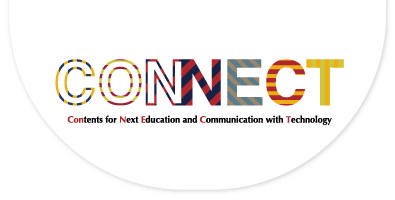How to Communicate with Students in Online Learning Environments

Examples of effective interaction with students in online classes
Classes delivered via digital media ( "Media-Facilitated Classroom" ), whether in synchronous or asynchronous format, must be recognized as having the same educational effectiveness as face-to-face classes (2007 Notice No. 114, Ministry of Education, Culture, Sports, Science and Technology). In the case of asynchronous format, in particular, sufficient care and follow-up must be provided alongside lectures.
In the case of fully online classes, unlike traditional classes, students and their instructor do not gather in a single place and time. What kind of instruction can be provided in such a situation?
This page suggests effective instructional methods, which are organized according to class format (lecture or seminar; synchronous or asynchronous) and sorted by the degree of interactive engagement.
The letters at the end of each item indicate the class size at which each method is likely to be effective: [S] (class size: less than 20 students), [M] (class size: 20 to 100 students), and [L]
(class size: 100 or more students) .
Consider using some of the following methods as a guide for designing a "Media-Facilitated Classroom."
Lecture-oriented
Synchronous
* The degree of interactive engagement increases as the list goes down.
- Receiving questions via the chat feature of Zoom [S] [M] [L]
- Students answering multiple-choice questions [available tools include the polling feature of Zoom, the Tests & Quizzes tool on PandA(p. 34), Mentimeter, and Google Forms] [S] [M] [L]
- Students answering questions orally [S] [M] [L]
- Utilizing questionnaire tools [Tests & Quizzes tool on PandA(p. 34), Mentimeter, Google Forms, etc.] [S] [M] [L]
- Having students work in groups (
the breakout room feature of Zoom ) [S]
Asynchronous
* The degree of interactive engagement increases as the list goes down.
- Receiving questions via e-mail [S] [M] [L]
- Conducting mini-exams on the Web [utilize the Tests & Quizzes tool on PandA(p. 34) or Google Forms.] [S] [M] [L]
-
Using the Forums tool (p. 46) on PandA to engage students in discussion
[S] [M] [L] - Interacting with students during Office Hours (appointments made in advance and/or through TAs)
[S] [M] [L]
Seminar
Synchronous
* The degree of interactive engagement increases as the list goes down.
- Receiving questions via a chat tool [S] [M]
- Students answering multiple-choice questions [available tools include the polling feature of Zoom, the Tests & Quizzes tool on PandA(P.34), Mentimeter, Google Forms] [S] [M] [L]
- Students answering questions orally [S] [M]
- Utilizing questionnaire tools [Tests & Quizzes tool on PandA(P.34), Mentimeter, Google Forms etc.] [S] [M] [L]
- Having students work in groups (
the breakout room feature of Zoom ) [S] [M] - Student presentations followed by a class discussion [S]
Asynchronous
* The degree of interactive engagement increases as the list goes down.
- Students using the Forums tool on PandA(P.46)to discuss a theme raised by the instructor [S] [M]
- Students submitting short reports, then using the Forums tool on PandA(P.46)to make comments [S] [M]
- Students submitting presentation materials, then using the Forums tool on PandA (P.46) to discuss [S] [M]

